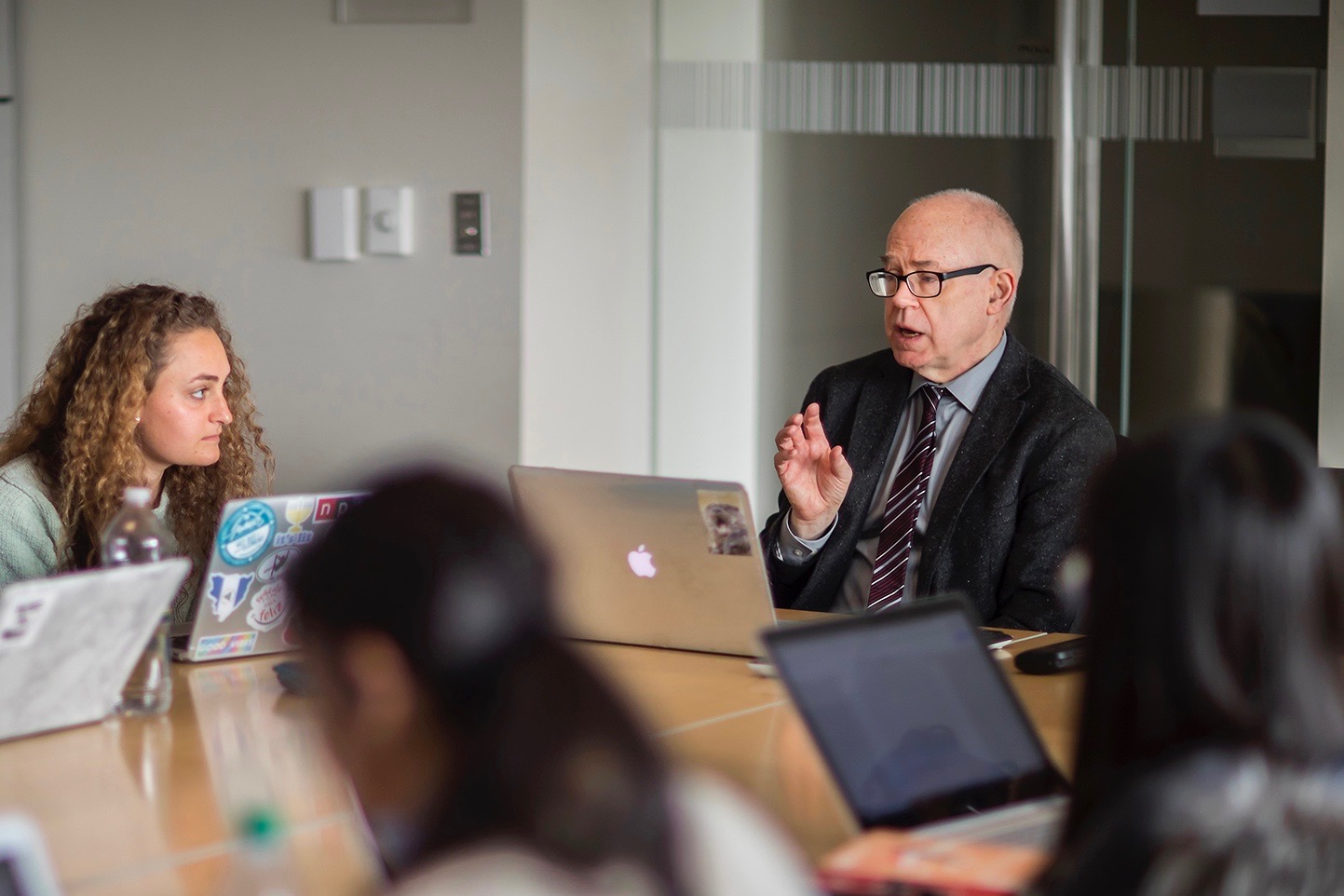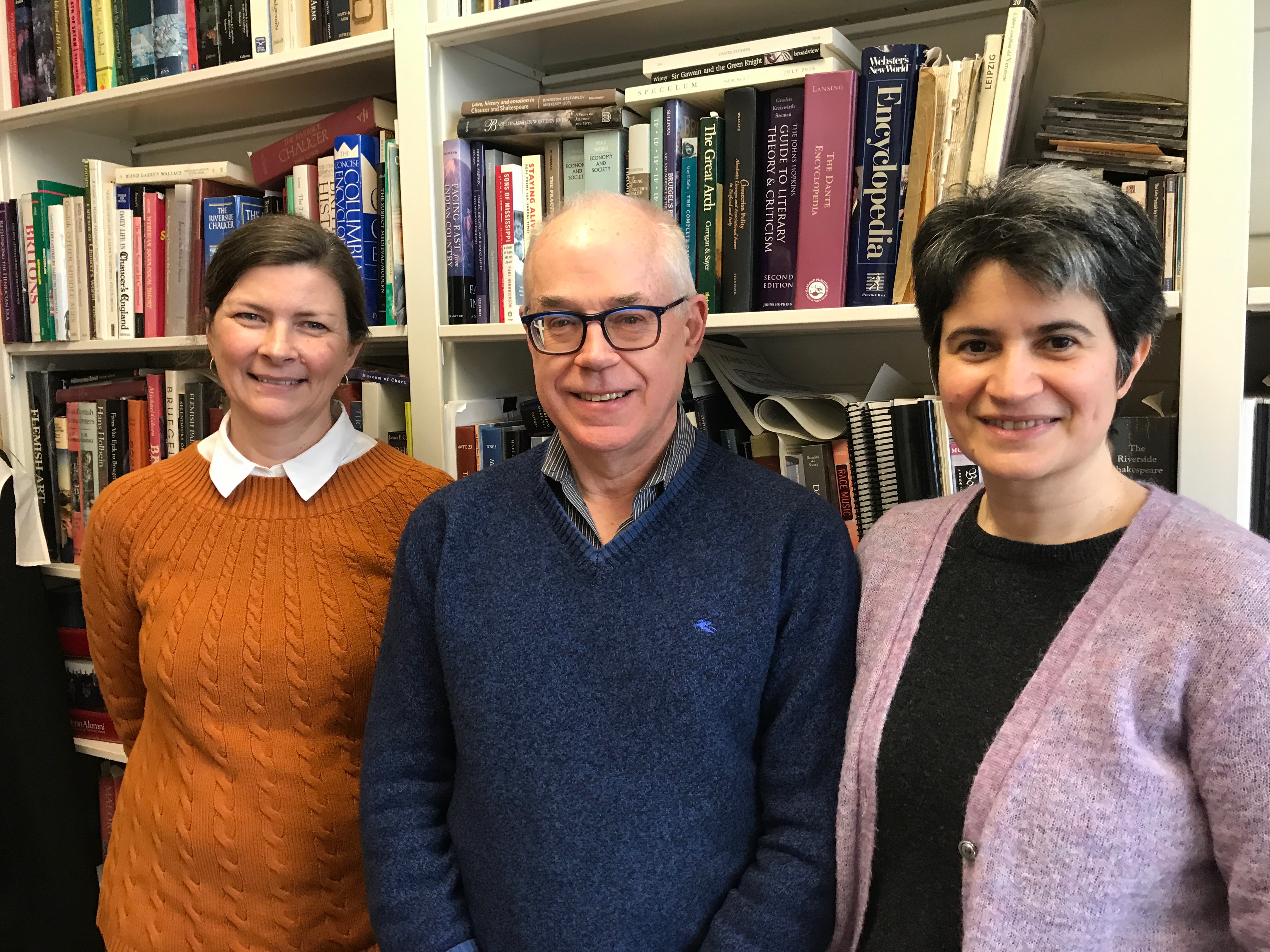
Penn will lower its proverbial drawbridge to welcome more than 500 medieval scholars to campus this weekend for the Medieval Academy of America conference. More than 70 panels, workshops, and lectures about the Middle Ages will convene, many led by Penn faculty, including the group’s current president, Professor of English David Wallace.
“It does attest to the tremendous strength of medieval studies here at Penn,” says Wallace of the School of Arts and Sciences. “And there’s nothing better than a hometown conference as the president. It is an honor.”
The 94th Annual Meeting of the Academy will be the third time Penn has hosted the conference, previously in 1966 and 1986, since the first held in Boston in 1926. Partners putting on this year’s event include Bryn Mawr College, Delaware Valley Medieval Association, Haverford College, St. Joseph’s University, and Villanova University.
The conference, “A Global Turn in Medieval Studies,” will run March 7-9 across the campus. It took two years to plan, led by Julia Verkholantsev, associate professor of Russian and East European studies, and Lynn Ransom, curator of programs at the Schoenberg Institute for Manuscript Studies at the Penn Libraries.
Verkholantsev is the founding director of Penn’s new program in Global Medieval & Renaissance Studies, an undergraduate minor and a graduate certificate program established in 2018. The program includes 11 disciplines, plus the Libraries.
“One thing that makes medieval studies distinctive is that we collaborate across disciplines—history, music, science, law, arts, religion, linguistics, literature, to name a few,” Wallace says. “We are the one unit in the whole university that works laterally across the humanities.”
More than two dozen Penn faculty will speak, present, and moderate panels, along with scholars from throughout Europe and the United States. The Medieval Academy of America is the largest organization of its kind in the world, with more than 3,700 members in the United States and another 600-plus internationally. Members are those who study or teach the Middle Ages.
“It is a strange thing to do, be a medievalist,” says Wallace, author of “Europe: A Literary History 1348-1418,” which covers vast territory in 1,600 pages in two volumes. “It takes a bit of explaining.”
One goal of the conference is to tackle the definition of the Middle Ages, the time period, and the geography, he says. “In some ways, we are having to rethink our identity within the university.”
The theme, “global turn” in medieval studies, acknowledges a changing discipline that now defines the Middle Ages as a broad historical and cultural phenomenon encompassing the full extent of Europe, as well as the Middle East, southern and eastern Asia, Africa, and the Americas. Verkholantsev says it is groundbreaking for the Medieval Academy to recognize this shift.
“We will talk about how to study the pre-modern, medieval, world globally, not just what happened, but what approaches and methods we use in order to study what happened, how we think about ourselves and our discipline,” she says. “It is self-reflection in a way.”
The Middle Ages is thought of as the era between the end of classical antiquity and the beginnings of the modern. It can extend back as far as the 4th century and extend as late as the 18th century, depending on the region and the culture.
“In scholarship today we are dealing with a broadening of geographies and a broadening of chronologies. We are really examining what ‘medieval studies’ means,” Ransom says. “The term ‘medieval’ gets used and abused. What does the medieval past mean, and how do we understand it and turn it into something that is not about a terrible world, but a world like our own, filled with diversity, challenges, questions about identity?”
Conference topics will address the natural world, the arts, material culture, literary studies, legal traditions, race, and ethnicity in the global Middle Ages. Roundtables, hands-on workshops, and lightning talks will highlight concepts and practices in K-12 education, diversity and race in the medieval studies, and practices and ethics of digital scholarship.
The digitization of manuscripts and other digital technologies used in the service of medieval studies will be a central topic, Ransom says. “We aren’t writing everything down on parchment with quill pens,” she says. “We are using the most up-to-date technologies. We will have a session with virtual reality to walk through historic sites and view medieval manuscripts.”
Ransom says this is a chance to highlight the Penn Libraries' extensive collection and what scholars can do with it.
“We see this as an opportunity to show that we have materials and resources and manuscripts that cover the global Middle Ages—the global pre-modern world. We want people to use them for research, at no cost. It is our mission to open up our collections to the world. They are the artifacts of our shared intellectual heritage,” she says. “We are excited to have people coming from around the world to gain a sense of what Penn Libraries can offer.”








